This article was first published in Sing Out: the Journal of the Australian National Choral Association (Vol.32, No.2, 2015). It is reproduced here with kind permission of ANCA(1)
 Figure 1: The Nogat Singers, Berlin (Neukölln). Photo (c) The Nogat Singers, 2014.
Figure 1: The Nogat Singers, Berlin (Neukölln). Photo (c) The Nogat Singers, 2014.
I arrived at Rathaus Tiergarten, a local town hall of Berlin on a sunny spring afternoon in May, just in time for a celebration. Assorted stalls, abuzz with colour and activity, promoted organisations that support people with disabilities and their carers. On the town hall steps a rock band called Handiclapped was setting up shop as a carload of nervous and excited singers arrived. They were members of the Nogat-Singers (Figure 1), a neighbourhood choir from the Neukölln suburb of Berlin who were star performers for an event to promote, celebrate and advocate for the rights of people with disabilities. Their performance was a vibrant and colourful mix of popular German folk songs and Schlager (there is no equivalent to the Schlager phenomenon in the English speaking world, but think Eurovision or Germany’s answer to American country and western music!). Having joined their dress rehearsal earlier in the week, I was impressed by the choir’s energy and its commitment to fostering a sense of community.
Founded by disability support organisation Lebenshilfe Berlin, the Nogat-Singers rehearses weekly in a local supported accommodation service, and most members live with intellectual disabilities. The choir receives funding from a social inclusion project grant of the European Union for its close neighbourhood ties. This made sense to me – a choir that sings with neighbours in its little patch of Berlin while at the same time fostering social inclusion for people with disabilities. Here was a great example of community music-making in action (or musicking as Christopher Small (1998) describes) and an ideal starting point for my study of choral singing in Germany.
The Nogat Singers is just one of a vast number of choirs singing regularly across Germany. They range from church choirs, to community choirs (defined loosely as amateur or non-professional choirs that perform publically) who perform in local pubs or municipal halls, through to professional choirs employing full-time salaried singers (there are eight at last count, from smaller chamber choirs to large radio choirs). My time in Germany in 2014 as a fellow of the Australian German Association and the Goethe-Institut allowed me to visit many and to explore the rich practice of choral singing in Germany today. Inspired, I returned with ideas for our choral movement in Australia. In this article I set out just a few impressions from my trip.
Support for the Arts and amateur music making in Germany has a long history. I once heard a passing comment about the three historic features of German village life: a shooting club (Schützenverein) for community defence; a fire brigade (Feuerwehr) for community safety; and a choir (Gesangverein or Liedertafel) or brass band (Kapelle) for community wellbeing! In 1871, 38 territories and free cities united under a common German federation. Most brought with them their own opera houses, concert halls and musical ensembles that had serviced the historic royal courts. Churches too played a crucial role in preserving musical traditions; in smaller communities church musicians were often school music teachers and community choir leaders too. One contemporary example of this long-held tradition is the St Thomas Boys Choir (Thomanerchor Leipzig) – perhaps the most famous boys’ choir worldwide – that celebrated its 800th anniversary in 2012 (Wydra, 2015).
Germany’s historical experiences with music – both negative and positive – have shaped its contemporary community singing culture. The atrocities committed by Germans during the period of National-Socialist (Nazi) government from 1933 to 1945 overshadow German attitudes toward music, singing and cultural practices. The Nazi government’s approach to music education, known as Musische Erziehung, manipulated music to suit its own agenda (Kertz-Welzel, 2008; 2013). This period defines to this day the parameters of “acceptable” music making. As Germans distanced themselves from the Nazi period after 1945, therapeutic uses of music were restricted to clinical settings rather than practiced out in the community. This was particularly the case in former West Germany and came at the expense of practices and initiatives that supported community wellbeing. Key scholars at the time supported this position. Theodor Adorno, in a series of speeches and public discussions between 1959-69, argued that after the manipulation of the Nazi period, music could not and should never be used to pursue goals of healing or social transformation (Kertz-Welzel, 2005). Adorno argued instead for the pursuit of musical excellence and individuality and against collective, community-minded music by amateur music-makers with transformative goals. Rather than teaching and enjoying singing with explicit goals such as community wellbeing in mind, music in West Germany was increasingly seen as an activity for its elite musicians, professionals, and with learning focussed on musical excellence. In the former East Germany, community singing was more widespread with its community wellbeing benefits recognised, but it frequently also served a propaganda purpose for that government. Opinions across reunified Germany in recent decades have shifted. Music education scholars are once again discussing the place of community music and the potential extra-musical benefits of music in schools, including for community wellbeing (Kertz-Welzel, 2008; 2013).
Yet the emphasis on the aesthetics of music across post-war Germany (East and West) preserved and nurtured a vital and historic cultural asset. Culture and the creative arts remain highly valued and comparatively well funded within German society and by all levels of government (McCaughey, 2005). A 2007 federal government report reinforces this view, arguing: “Culture is not simply ornamental; it is the foundation of our society and the platform upon which it grows. The role of politics is to safeguard and strengthen culture[i]” (Deutscher Bundestag). A total of EUR11.2 billion was spent in 2011 to support Germany’s cultural activities, including EUR8 billion from its federal, state and municipal governments, with the remainder from its Christian churches[ii] and private funding. Germany’s 16 States (Länder) together contributed more than one third of this total (EUR3.4 billion). The Länder retain powers in educational and cultural matters and a large say in preserving Germany’s many cultural identities.
Musical life in Germany today is “noted for its diversity, high quality and geographic density – keywords that continue as ever to define Germany‘s special reputation as a land of music” (German Music Information Centre, 2011, p. ix).
There were at last count 133 publicly funded symphony and chamber orchestras, 83 music theatres, nearly 500 regular music festivals, and thousands of amateur, semi-professional choruses, orchestras and ensembles (GMIC, 2011, ix). It is not surprising then that community music making is the largest civic movement within Germany (Reimers, 2012, p.1).
Choral singing today is an opportunity for many to partake in some of the musical delights and masterpieces of Germany’s rich choral music history. A leading scholar of German choral singing (Brusniak, 2003, p.69) suggests choral music and a vast and diverse tapestry of choirs are essential and integrated parts of its public and private musical life. There are nearly 59,100 associated choirs and choral organisations in Germany, including about 29,900 secular and 37,200 religious organisations. These choirs engage nearly 2.3 million singers regularly (Reimers, 2012, p.2). There is a large audience base for choral concerts too. A 2004 study estimated about 60 million people attend some 300,000 choral concerts annually in Germany (reported in Reimers, 2012, p.1). These formal choral activities do not include the multitude of established and ad hoc choral groups and public singing that is an increasing feature at large gatherings – the 2014 World Cup football tournament comes to mind!
I was interested to find out who spoke for choral music in Germany. At first sight, the coordination and advocacy of choral music across Germany evoked images of Franz Kafka’s writings: a confusing landscape of overlapping organisations, funding bodies and responsibilities all claiming to represent and advocate for the interests of choral music. Yet when viewed through Germany’s unique historical lens this overlap, it seems to me, provides safety in plurality (Vielfältigkeit). It avoids a single, central point of control for a mass movement and all the negative consequences this represents in many German minds.
Germany therefore sings with two voices when it comes to choral singing. Two peak bodies represent choral singing nationally: the Bundesvereinigung Deutscher Chorverbänder e.V. (BDC) and the Deutscher Chorverband e.V. (DCV). Together they include and advocate for the vast majority of German choirs. The DCV is the world’s largest choral association and represents the vast majority of Germany’s non-religious choral associations (including over 30 state-based and regional associations). DCV designs and oversees a host of innovative programs and schemes for its member choirs and leaders, supported by a paid, full-time staff. It also publishes Chorzeit, Germany’s monthly national choral music magazine with 35,000 subscribers and on sale in newsagents across the country (DCV, 2014).
The BDC counts among its members Germany’s peak catholic (katholische) and protestant (evangelische) choral organisations, those representing youth music, and its 500 concert choirs. The Federal President of Germany bestows the Zelter Plakatte to choirs that reach 100 years of age – an important initiative administered by the BDC (2014).
In 2014, Germany’s choral music culture is in transition. When I talked about my research project to non-choral music enthusiasts (or better said, yet-to-be converted choral music enthusiasts), many pictured the all-male Liedertafel choir, Germany’s dominant historical choir model. Yet this traditional picture of “choir” is rapidly changing. A 2012 New Zealand film/TV documentary about folk singing in Germany, Sound of Heimat – Deutschland Singt (http://www.soundofheimat.de/), helped to raise awareness about the diverse types of music out there. The sheer variety of musical styles and the ability of singers to seek out choirs according to their musical tastes and less limited by their location have fundamentally changed Germany’s choral community. Children’s, youth and women’s choirs are growing while the more traditional choral organisations (such as the Liedertafel) are in decline. Mixed choirs have grown in popularity and now outnumber male choirs (Arit, 2014) and there has been a boom in jazz and pop genre choirs (AlumniPortal Deutschland 2014; Tip Magazin, 2014). Singing-related talent competitions, television series and films, as popular in Germany as in Australia, have contributed to this popularity.
 Figure 2: Die Rheintöchter, lesbian comedy choir, Cologne. Photo (c) Magdalena Hutter, 2013.
Figure 2: Die Rheintöchter, lesbian comedy choir, Cologne. Photo (c) Magdalena Hutter, 2013.
I took particular interest in community choirs with members who may have experienced social exclusion at some point in their lives. I observed many choirs of the Lesbian, Gay, Bisexual, Transgender and Intersex and Queer (LGBTIQ) communities (Figure 2 for example), choirs for people with disabilities, church-based choirs supporting new migrants to Germany and choirs for people experiencing homelessness. I led a rehearsal of Hard Chor ELLA (Figure 3), an innovative school-based community choir based in Pankow, a suburb of the former East Berlin. I was also fortunate to observe Berlin’s two professional choirs in rehearsal (RIAS Kammerchor and Rundfunkchor Berlin) and the Rundfunkchor in performance. You can find a full list of choirs, interviews and more detailed case studies in my report.
 Figure 3: Hard Chor ELLA, Berlin (Pankow). Spring Concert. Photo (c) Inés Weinmann, 2013.
Figure 3: Hard Chor ELLA, Berlin (Pankow). Spring Concert. Photo (c) Inés Weinmann, 2013.
Ideas for Australia’s Choral Movement
I believe Australia can enhance its choral music movement by strengthening its supporting institutions and drawing upon innovations and ideas from Germany. I offer ideas for policy-makers, committees, and musical and administrative leaders who work with community choirs particularly. My report aims to complement recent reviews of other aspects of music in Australia including state and national music education reviews. Here are just a few ideas:
- Create a vocational pathway with appropriate professional development and recognition for community choral leaders
- Establish a national community choir awards scheme, including a “long service” citation for choirs that reach a certain age (similar to Germany’s Zelter Plakatte)
- Appoint a high profile patron to promote and advance choral music within communities
- Lighten the reporting load for committees and choral music staff by negotiating an agreement with the Australasian Performing Right Association (APRA) for a single annual fee that covers all choir arrangement and performance rights across a pre-approved list of songs (similar to an agreement reached between DCV and Germany’s APRA equivalent: http://www.deutscher-chorverband.de/leistungen/gema/)
- Create an accreditation program in early childhood education (similar to Germany’s Die Carusos: die-carusos.de/) where choir leaders “teach the teachers” to ensure young children receive high quality and pedagogically sound singing experiences from an early age
- Establish a national professional choir that includes within its mandate significant outreach work to choirs and communities of all ages.
To achieve these things we would need to first properly resource our expert national organisations already doing such great work in the area – the Australian National Choral Association (ANCA) and Music Australia – along with state-based institutions such as Community Music Victoria. Let’s start this conversation and draw upon lessons and ideas from countries such as Germany to give us a head start.
Choral music in Germany, a celebrated and treasured cultural asset, is gradually changing its tune to include people of all abilities and backgrounds and in a way that improves community wellbeing and cohesion. My time there provided refreshing ideas, valuable lessons and ongoing inspiration for my practice as a choral leader and researcher in Australia. Above all, it was a reminder to celebrate both the act and the art of choral music making and the joy it brings to communities here and in Germany.
(1): My thanks to Dr Alex Crooke for his insightful comments on earlier drafts of this paper.
Article by Ben Leske

Ben Leske is a Melbourne-based choral conductor, community music facilitator, and PhD candidate in the National Music Therapy Research Unit in the Melbourne Conservatorium of Music (The University of Melbourne). Ben’s thesis explores choral singing and social inclusion for young people. From 2009-2014, Ben was Music Director of the Melbourne Gay and Lesbian Youth Chorus (now shOUT Youth Chorus).
Ben is passionate about all things German and was awarded the Australian German Association and Goethe-Institut Fellowship to explore choral singing in Germany in 2014.
You can read Ben’s full report at: http://www.aga.org.au/fellowship/past-winners/.
You can contact Ben by email: benleskemusic@gmail.com or benleskemusic.com
References cited in this article
Arit, Alexander. (2014, 1 July). Graphical statistical reference of number of choirs by type (historical) – 1951-2005. Unpublished data provided to author.
BDC (Bundesvereinigung Deutscher Chorverbände e.V.). Die Zelter-Plakette. Retrieved from http://www.chorverbaende.de/de/zelter-plakette.html
Brusniak, Friedhelm. (Ed.). (2003). Chor – Visionen in Musik. Essener Thesen zum Chorsingen im 21. Jahrhundert..Arbeitsgemeinschaft Deutscher Chorverbänder.
DCV (Deutscher Chorverband e.V.). (2014). Chorzeit: Mediadaten: Anzeigenspreizliste 3/14. Retrieved from http://www.deutscher-chorverband.de/fileadmin/media/downloads/neue_chorzeit/Chorzeit_Mediadaten.pdf
Deutscher Bundestag. (2007). Schlussbericht der Enquete-Kommission: „Kultur in Deutschland“. (16/7000), author’s translation.
German Music Information Centre (GMIC). (2011). Musical Life in Germany: Structure, Facts and Figures: German Music Council (Deutscher Musikrat).
Kertz-Welzel, Alexandra. (2005). The pied piper of Hamelin: Adorno on music education. Research studies in music education (25), 1-12.
Kertz-Welzel, Alexandra. (2008). A matter of comparative music education? Community music in Germany. International Journal of Community Music, 1(3), 401-409.
Kertz-Welzel, Alexandra. (2013). Internationalizing and localizing: Shaping community music in Germany. International Journal of Community Music, 6(3), 263-272. doi: 10.1386/ijcm.6.3.263_1
Luehrs-Kaiser, Kai. (2013, 22 February). Chor@Berlin Festival im Radialsystem. Tip Berlin. Retrieved from http://www.tip-berlin.de/kultur-und-freizeit/chor-berlin-festival-im-radialsystem
Masso, Alex. (2013). Community Choirs in Australia. Music In Communities Network (Music Council of Australia).
McCaughey, Claire. (2005). Comparisons of Arts Funding in Selected Countries: Preliminary Findings: Canada Council for the Arts.
Reimers, Astrid. (2012). Laienmusizieren: Deutsches Musikinformationszentrum.
Small, Christopher. (1998). Musicking: The meanings of performing and listening. Hanover: University Press of New England.
Wydra, Kristina (2014). ‘Wherever people sing, you can happily settle…’ – Germans are flocking to join choirs. Alumniportal Deutschland. Retrieved from http://www.alumniportal-deutschland.org/en/germany/culture/article/choirs.html
Other useful reading
English language
- Higgins, Lee. (2012). Community Music: In Theory and In Practice: Oxford University Press.
- German Music Information Centre. (2011). Musical Life in Germany: Structure, Facts and Figures: German Music Council (Deutscher Musikrat). Retrieved from http://www.miz.org/musicl-life-in-germany/
- Bartleet, Bridie-Lee, Dunbar-Hall, P., Letts, R., & Schippers, H. (2009). Sound links: Community music in Australia. Brisbane: Griffith University.
German language
[i] Original German text: Kultur ist kein Ornament. Sie ist das Fundament, auf dem unsere Gesellschaft steht und auf das sie baut. Es ist Aufgabe der Politik, dieses zu sichern und zu stärken
[ii] An important note that Germans pay an extra income tax to the church according to the denomination into which they were baptised. The Federal Government collects these taxes to fund church activities.


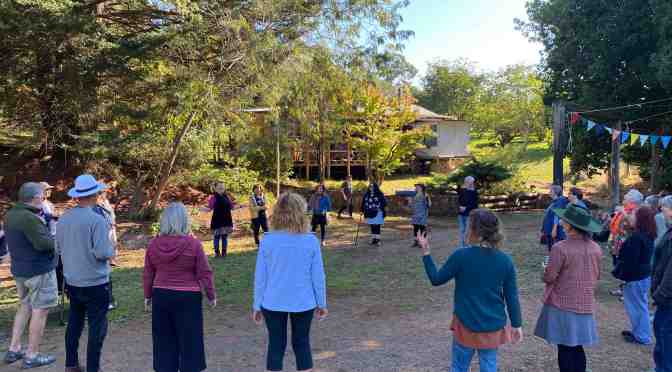

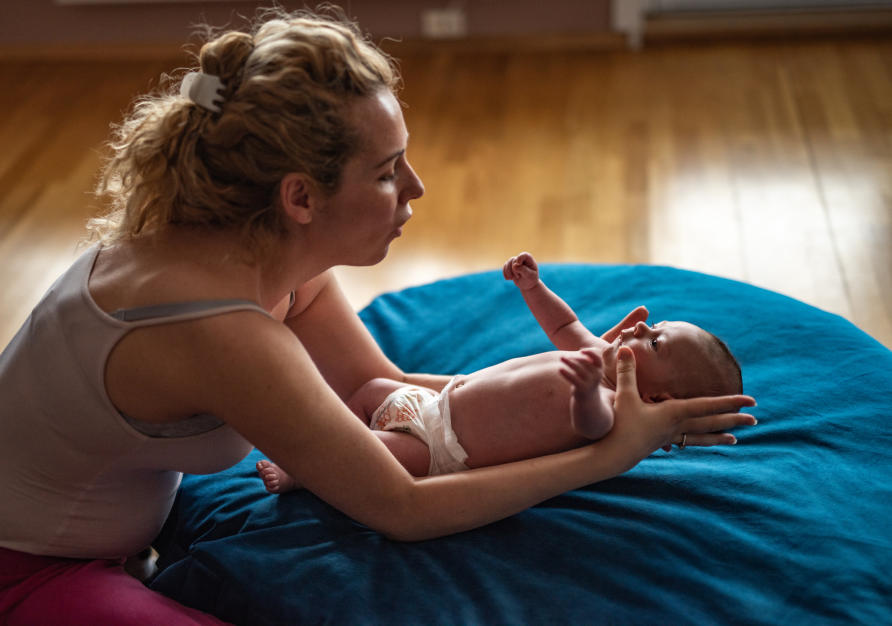
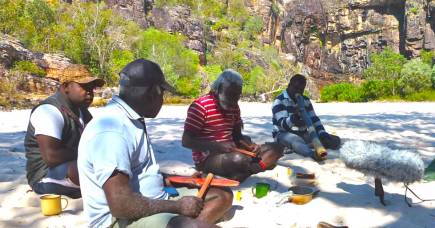
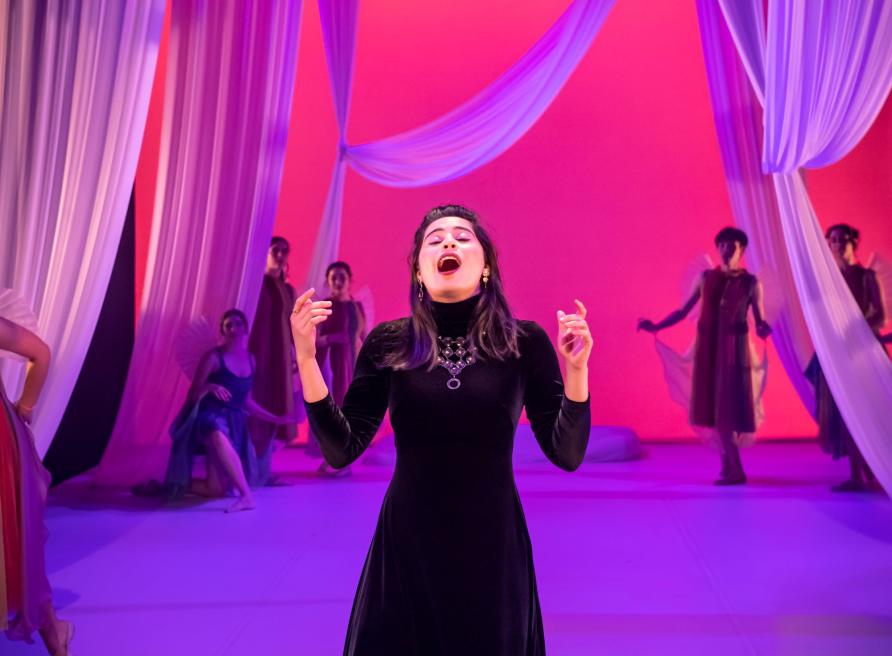
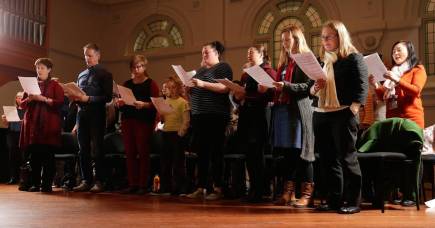
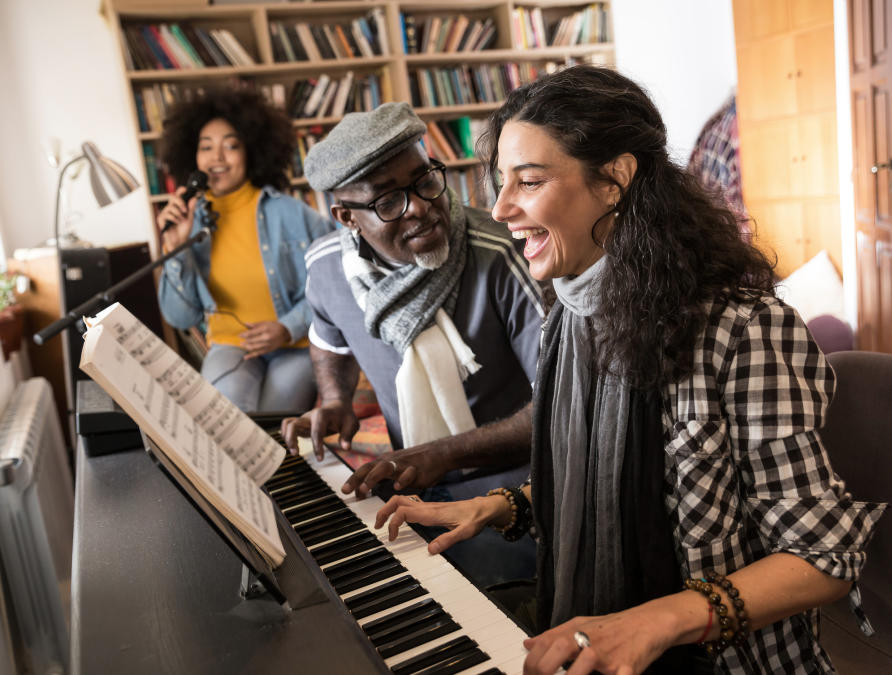
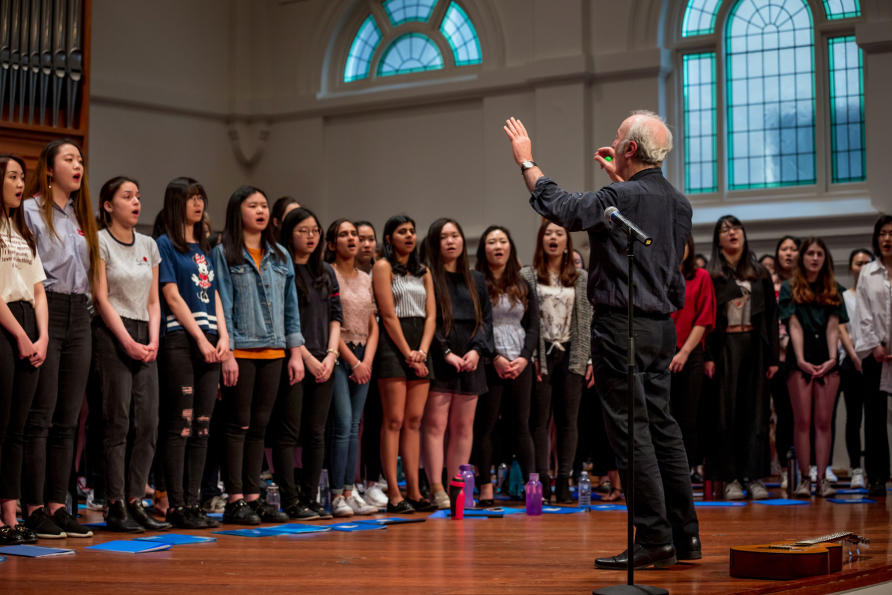




 Figure 1: The Nogat Singers, Berlin (Neukölln). Photo (c) The Nogat Singers, 2014.
Figure 1: The Nogat Singers, Berlin (Neukölln). Photo (c) The Nogat Singers, 2014. Figure 2: Die Rheintöchter, lesbian comedy choir, Cologne. Photo (c) Magdalena Hutter, 2013.
Figure 2: Die Rheintöchter, lesbian comedy choir, Cologne. Photo (c) Magdalena Hutter, 2013. Figure 3: Hard Chor ELLA, Berlin (Pankow). Spring Concert. Photo (c) Inés Weinmann, 2013.
Figure 3: Hard Chor ELLA, Berlin (Pankow). Spring Concert. Photo (c) Inés Weinmann, 2013.



 Both of the books were sung into being at a CMVic celebration held last weekend. Beneath the bunting in
Both of the books were sung into being at a CMVic celebration held last weekend. Beneath the bunting in 





 Depending how you look at life, Community Music Victoria is winding down/gearing up for the holidays. The serviettes and paper plates have been counted out, the glasses are on ice and the end of year party happens this weekend.
Depending how you look at life, Community Music Victoria is winding down/gearing up for the holidays. The serviettes and paper plates have been counted out, the glasses are on ice and the end of year party happens this weekend. 